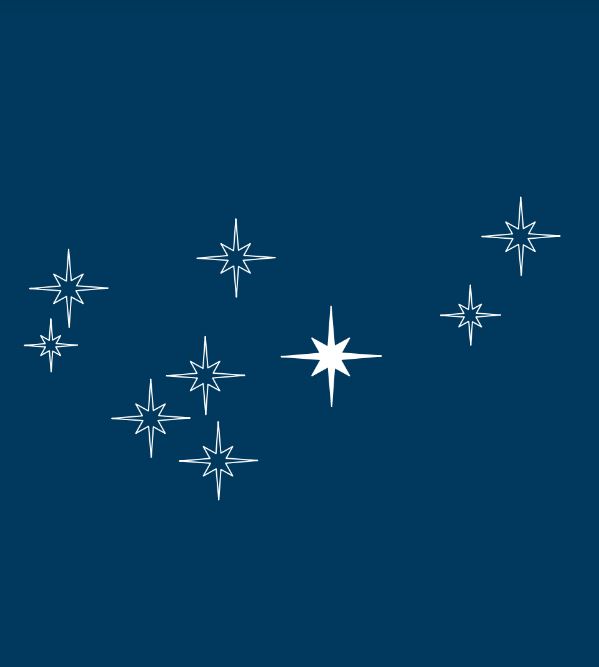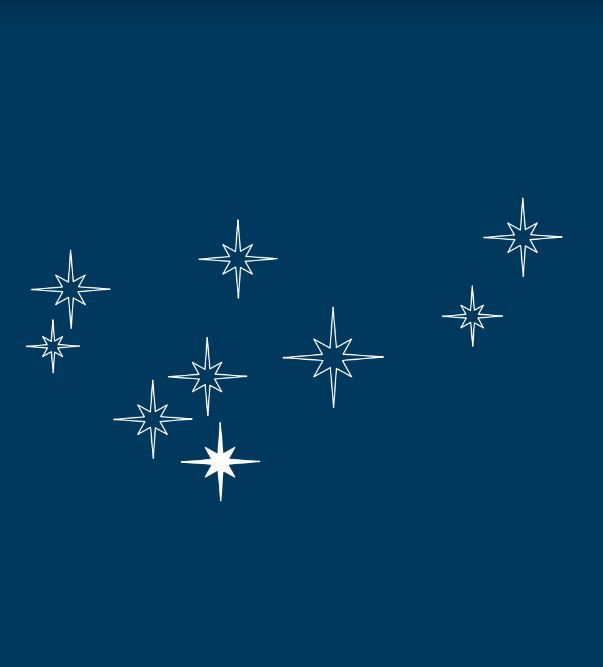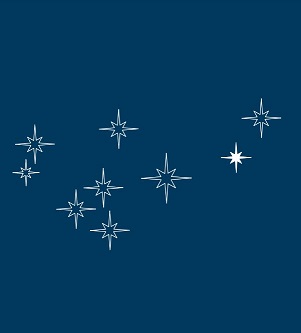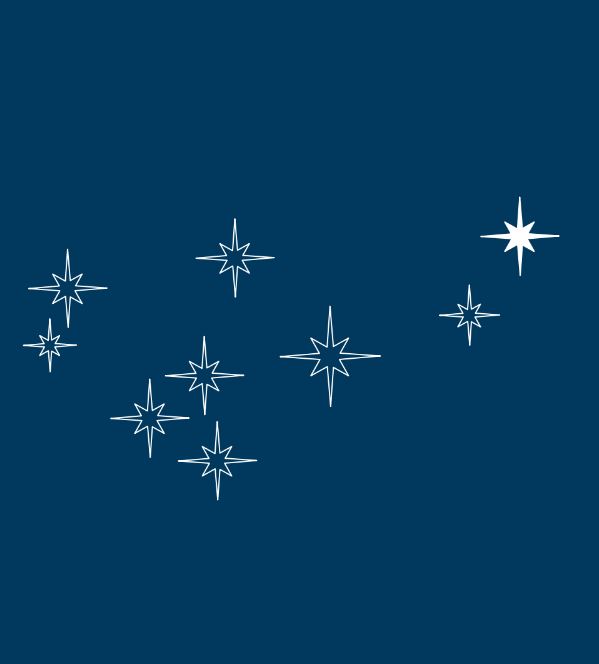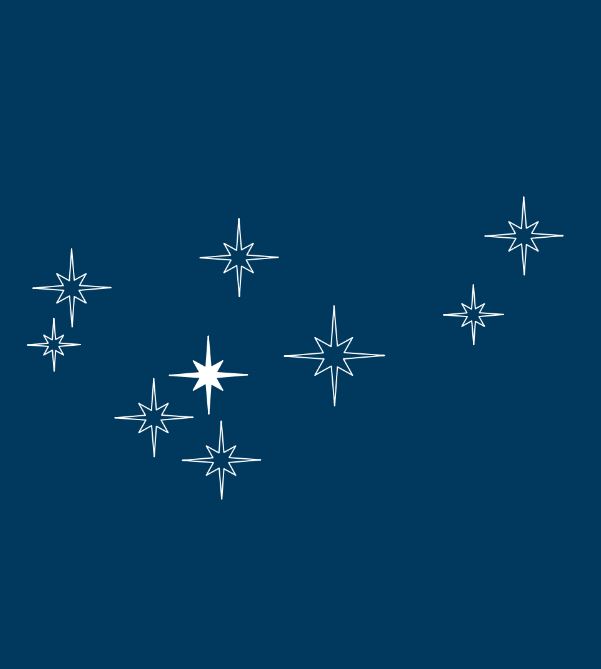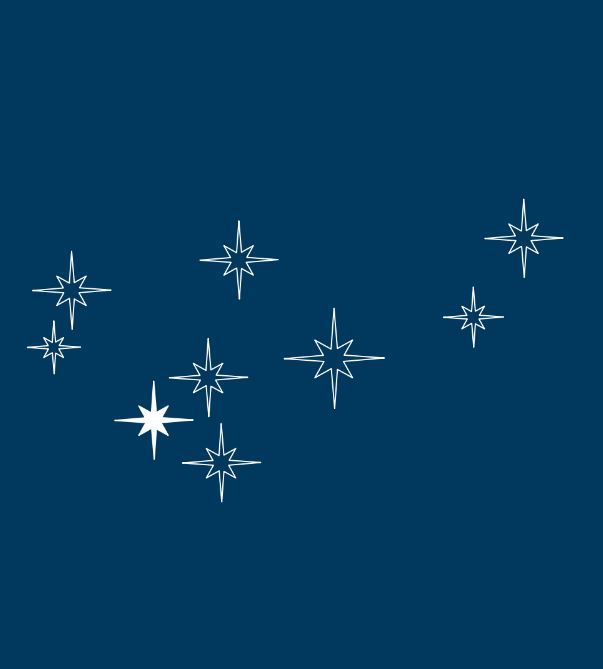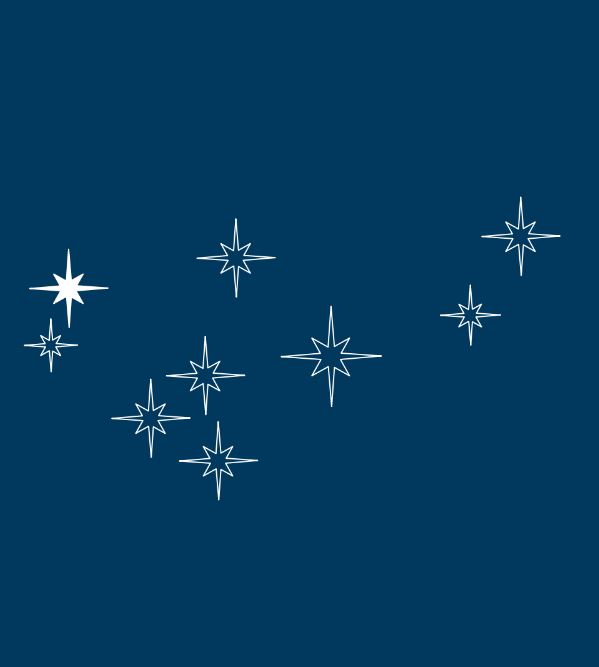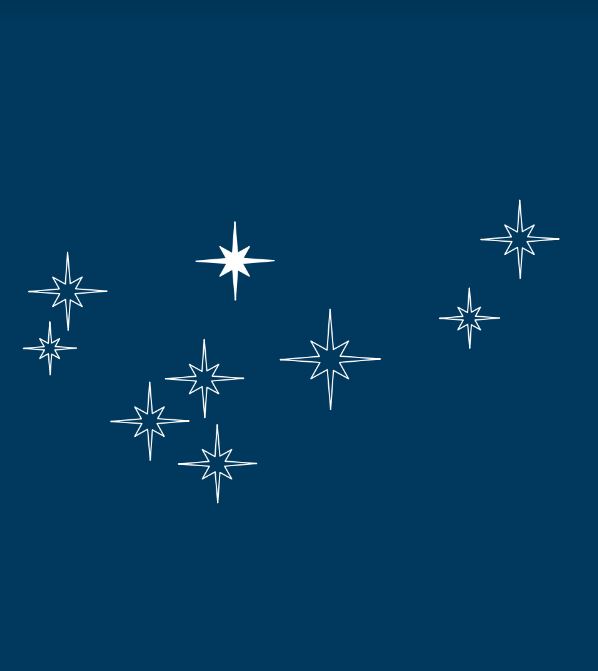What is Matariki
Details
Matariki is one of our closest star clusters; in the constellation of Taurus. It appears bluish white in the morning sky.
The hazy light connecting the stars is the nebula Merope passing through. Other names: Pleiades,The Seven Sisters, Subaru, Mao, Krittika.
Matariki represents an important cultural and spiritual event in Māori tradition and marks the beginning of the Māori New Year. A time of reflection, celebration and the coming together of communities to honour the past and prepare for the future.
Matariki is a time to reflect on our past, honour our ancestors and to prepare for the future. It represents our connection to the cycles of nature and the connection between the earth and the sky (Papatūānuku and Ranginui). It holds deep spiritual and symbolic significance, reminding us of the importance of friendship, sustainability and the interdependence of all living things.
Matariki is a time of renewal, gratitude and setting intentions for the upcoming year.
The hazy light connecting the stars is the nebula Merope passing through. Other names: Pleiades,The Seven Sisters, Subaru, Mao, Krittika.
Matariki represents an important cultural and spiritual event in Māori tradition and marks the beginning of the Māori New Year. A time of reflection, celebration and the coming together of communities to honour the past and prepare for the future.
Matariki is a time to reflect on our past, honour our ancestors and to prepare for the future. It represents our connection to the cycles of nature and the connection between the earth and the sky (Papatūānuku and Ranginui). It holds deep spiritual and symbolic significance, reminding us of the importance of friendship, sustainability and the interdependence of all living things.
Matariki is a time of renewal, gratitude and setting intentions for the upcoming year.
